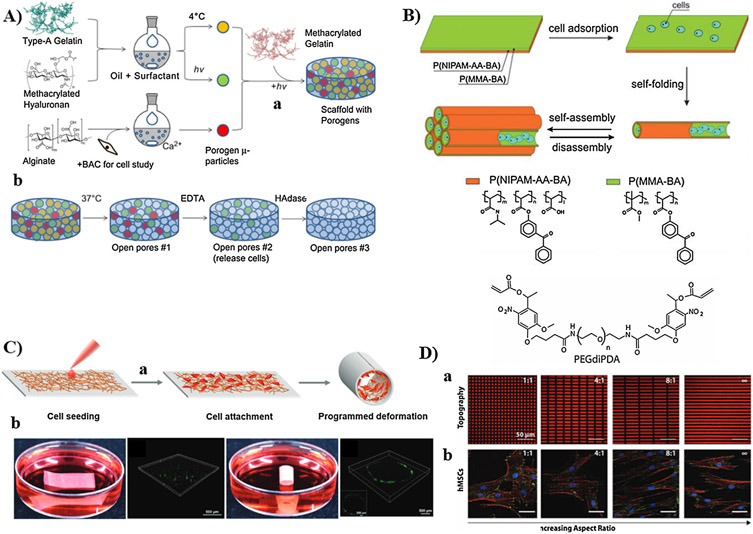Fig. 11.
(A) Scheme depicting dynamic modulation of scaffold porosity using stimuli-responsive porogens: (a) encapsulation of three stimuli-responsive porogens (gelatin, methacrylated hyaluronan, and alginate) within crosslinked gelatin; (b) dynamic macropore formation using temperature, EDTA, and Hyaluronidase stimuli for temporal sequential removal of porogens. (B) Dynamic manipulation of pore geometry using thermo-responsive hydrophilic PNIPAM-based copolymer and hydrophobic PMMA-based copolymer, to induce self-assembly of 3D structure with tubular aligned pores. (C) Illustration of topography manipulation using shape-morphing scaffolds: (a) the temporary planar scaffold cultured with HUVECs self-rolled at physiological temperature to form permeant 3D tubular structure; (b) calcein staining of HUVECs shows the tubular organization of cells on the 3D tubular scaffold as compared to the 2D planar scaffold. (D) Influence substrate topography on hMSCs migration: (a) substrates of different aspect ratio developed by photolithography using photodegradable PEG hydrogel; (b) immunostaining for cytoskeleton components to show the increasing alignment of hMSCs with increasing the aspect ratio. A: [295], Copyright 2013. Reproduced with permission from Elsevier Inc. B: [305], Copyright 2013. Reproduced with permission from Royal Society of Chemistry. C: [308], Copyright 2015. Reproduced with permission from John Wiley and Sons Inc. D: [309], Copyright 2013. Reproduced with permission from John Wiley and Sons Inc.

